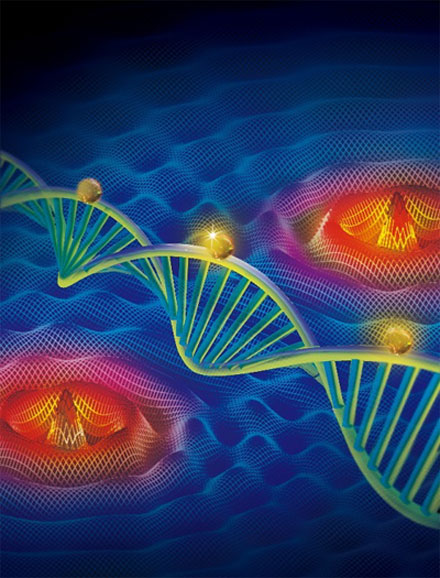
Single-Molecule Localization Microscopy Approach Improves Precision
An interferometric, single-molecule localization method for superresolution fluorescence microscopy, developed by scientists at the Institute of Biophysics of the Chinese Academy of Sciences, could significantly improve localization precision compared with conventional centroid fitting methods. The new approach is called Repetitive Optical Selective Exposure (ROSE). It was developed by professors Tao Xu and Wei Ji.
The ROSE technique uses six different direction and phase interference fringes to excite fluorescent molecules. The intensity of the molecules is closely related to the phase of the interference fringes. The system locates a fluorescence molecule through the intensities of multiple excitation patterns of an interference fringe.
To verify the performance of ROSE, the researchers designed three different lattice grids of DNA origami structures with 5-, 10- and 20-nm point-to-point spacing. While both conventional centroid fitting and ROSE were able to resolve the 20-nm structure at the same photon budget, ROSE alone could also clearly resolve the 10-nm distance.

A schematic diagram of ROSE. Courtesy of Guoyan Wang and Nanjun Ou.
The researchers demonstrated that ROSE could resolve a 5-nm structure at a resolution of about 3 nm over a large field of view of 25 x 25 μm2. These results suggest that ROSE has the ability to push the resolving power of single-molecule localization microscopy (SMLM) to the molecular scale.
The researchers also used ROSE to analyze cellular nanostructures. Their experiments showed that ROSE has advantages over conventional SMLM in resolving the hollow structure of single microtubule filaments, small clathrin-coated pits, and cellular nanostructures of actin filament. A Fourier ring correlation analysis indicated that ROSE improved final resolution by twofold compared with the centroid fitting method.
The researchers believe that the ROSE method could extend the application of SMLM in biomacromolecule dynamic analysis and structural studies at the molecular scale. Although various image-based centroid fitting methods have been used in SMLM to precisely determine the location of each fluorophore, it is still a challenge to improve the single-molecule lateral localization precision to molecular scale for high-throughput nanostructure imaging. ROSE provides interferometric single-molecule localization microscopy with fast, modulated structured illumination, and could be extended to 3D nanometer-scale imaging by introducing additional excitation patterns along the axial direction.
The research was published in Nature Methods (https://doi.org/10.1038/s41592-019-0544-2).
Published: September 2019